
Acrylic paint is a fast-drying paint made of pigment suspended in acrylic polymer emulsion and plasticizers, silicone oils, defoamers, stabilizers, or metal soaps. Most acrylic paints are water-based, but become water-resistant when dry. Depending on how much the paint is diluted with water, or modified with acrylic gels, mediums, or pastes, the finished acrylic painting can resemble a watercolor, a gouache, or an oil painting, or have its own unique characteristics not attainable with other media.

Oil painting is the process of painting with pigments with a medium of drying oil as the binder. It has been the most common technique for artistic painting on wood panel or canvas for several centuries, spreading from Europe to the rest of the world. The advantages of oil for painting images include "greater flexibility, richer and denser colour, and a wider range from light to dark". But the process is slower, especially when one layer of paint needs to be allowed to dry before another is applied.

Paint is any pigmented liquid, liquefiable, or solid mastic composition that, after application to a substrate in a thin layer, converts to a solid film. It is most commonly used to protect, color, or provide texture to objects. Paint can be made or purchased in many colors—and in many different types, such as watercolor or synthetic. Paint is typically stored, sold, and applied as a liquid, but most types dry into a solid. Most paints are either oil-based or water-based and each has distinct characteristics. For one, it is illegal in most municipalities to discard oil-based paint down household drains or sewers. Clean-up solvents are also different for water-based paint than they are for oil-based paint. Water-based paints and oil-based paints will cure differently based on the outside ambient temperature of the object being painted Usually, the object being painted must be over 10 °C (50 °F), although some manufacturers of external paints/primers claim they can be applied when temperatures are as low as 2 °C (35 °F).
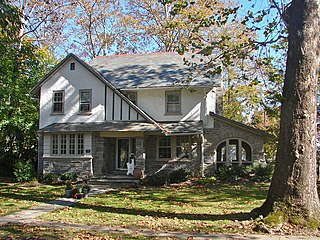
Narberth is a borough in Montgomery County, Pennsylvania, United States. It is one of many neighborhoods on the historic Pennsylvania Main Line. The population was 4,282 at the 2010 census.

Bryn Mawr College is a women's liberal arts college in Bryn Mawr, Pennsylvania. Founded as a Quaker institution in 1885, Bryn Mawr is one of the Seven Sister colleges, a group of elite, historically women's colleges in the United States, and the Tri-College Consortium along with Haverford College and Swarthmore College. The college has an enrollment of about 1,350 undergraduate students and 450 graduate students. It was the first women's college to offer graduate education through a PhD.
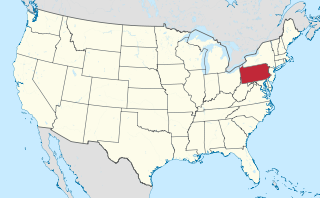
The Philadelphia Main Line, known simply as the Main Line, is an informally delineated historical and social region of suburban Philadelphia, Pennsylvania. Lying along the former Pennsylvania Railroad's once prestigious Main Line, it runs northwest from Center City Philadelphia parallel to Lancaster Avenue.

The American Paint Horse is a breed of horse that combines both the conformational characteristics of a western stock horse with a pinto spotting pattern of white and dark coat colors. Developed from a base of spotted horses with Quarter Horse and Thoroughbred bloodlines, the American Paint Horse Association (APHA) breed registry is now one of the largest in North America. The registry allows some non-spotted animals to be registered as "Solid Paint Bred" and considers the American Paint Horse to be a horse breed with distinct characteristics, not merely a color breed.

In American architecture, painted ladies are Victorian and Edwardian houses and buildings repainted, starting in the 1960s, in three or more colors that embellish or enhance their architectural details. The term was first used for San Francisco Victorian houses by writers Elizabeth Pomada and Michael Larsen in their 1978 book Painted Ladies: San Francisco's Resplendent Victorians. Although polychrome decoration was common in the Victorian era, the colors used on these houses are not based on historical precedent:
Roger W. Moss is an historian, educator, administrator and author in Philadelphia, Pennsylvania. Throughout a long career he has also been an aggressive and entrepreneurial advocate for the preservation and authentic restoration of historic buildings. For forty years Moss directed the Athenaeum of Philadelphia, a special collections library near Independence Hall, and for 25 of those years he also taught in the Graduate Program in Historic Preservation at the University of Pennsylvania.
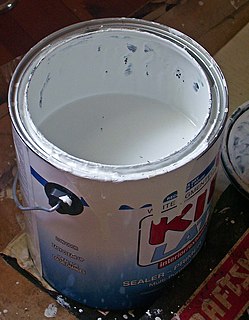
A primer or undercoat is a preparatory coating put on materials before painting. Priming ensures better adhesion of paint to the surface, increases paint durability, and provides additional protection for the material being painted.

ChromaFlair is a pigment used in paint systems, primarily for automobiles. When the paint is applied, it changes color depending on the light source and viewing angle. It was created at JDS Uniphase and is used by DuPont and PPG.

Joe Bailon was an American car customizer credited with creating the paint color Candy Apple Red, which eventually led to a full spectrum of candy paint colors, each with a metallic base-coat, a transparent color coat, and a final clear coat.
Silicate mineral paints or mineral colors are paint coats with mineral binding agents. Two relevant mineral binders play a role in the field of colors: Lime and silicate.
Historic paint analysis, or, architectural paint research, is the scientific analysis of architectural finishes, including not only paints but also metallic finishes and clear and translucent finishes used on historic buildings. The primary purpose of such analysis is to determine the color of the finish used at a particular time in the building's history, usually the original construction, but not always. Secondary purposes include determination of ingredients such as media and pigments. Paint analysis can also be used as a dating technique for various building elements.

The Baldwin School is a private school for girls in Bryn Mawr, Pennsylvania, United States. It was founded in 1888 by Florence Baldwin.

Thornton Oakley was an American artist and illustrator.
Acrylic painting techniques are different styles of manipulating and working with polymer-based acrylic paints. Acrylics differ from oil paints in that they have shorter drying times and are soluble in water. These types of paint eliminate the need for turpentine and gesso, and can be applied directly onto canvas. Aside from painting with concentrated color paints, acrylics can also be watered down to a consistency that can be poured or used for glazes.
A cropout, crop-out or crop out is a horse with body spots, including pinto or leopard complex spotting, or "high white" horse markings, with a sire and dam who both appeared to have been solid-colored. There are several variations in the definition, depending on the breed registry involved. There are multiple genetic reasons that may cause a horse to be a cropout. Sometimes solid-colored horses throw cropouts because some spotting patterns are recessive genes that are not necessarily expressed unless the relevant allele is inherited from both parents. Other times a gene may be a dominant or incomplete dominant but so minimally expressed that the horse looks solid but can pass flashy color on to its offspring.
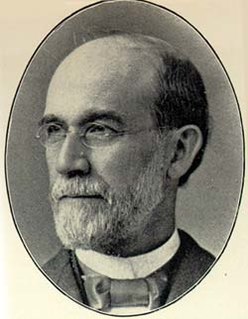
Addison Hutton (1834–1916) was a Philadelphia architect who designed prominent residences in Philadelphia and its suburbs, plus courthouses, hospitals, and libraries, including the Ridgway Library and the Historical Society of Pennsylvania. He made major additions to the campuses of Westtown School, George School, Swarthmore College, Bryn Mawr College, Haverford College, and Lehigh University.
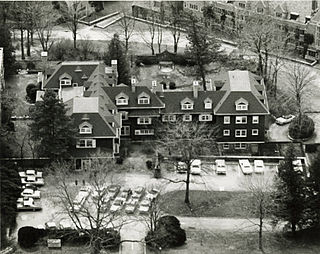
The Bryn Mawr College Deanery was the campus residence of the first Dean and second President of Bryn Mawr College, Martha Carey Thomas, who maintained a home there from 1885 to 1933. Under the direction of Thomas, the Deanery was greatly enlarged and lavishly decorated for entertaining the college's important guests, students, and alumnae, as well as Thomas’ own immediate family and friends. From its origins as a modest five room Victorian cottage, the Deanery grew into a sprawling forty-six room mansion which included design features from several notable 19th and 20th century artists. The interior was elaborately decorated with the assistance of the American artist Lockwood de Forest and Louis Comfort Tiffany, de Forest's partner in the design firm Tiffany & de Forest, supplied a number of light fixtures of Tiffany glass. De Forest's design of the Deanery's so-called 'Blue Room' is particularly important as it is often considered one of the best American examples of an Aesthetic Movement interior, alongside the Peacock Room by James Abbott McNeill Whistler. In addition, John Charles Olmsted, of the Olmsted Brothers landscape design firm, designed a garden adjacent to the Deanery, which also contained imported works of art from Syria, China, and Italy. The Deanery's beauty and rich history established the Deanery as a cherished space on campus and an icon of Bryn Mawr College.















